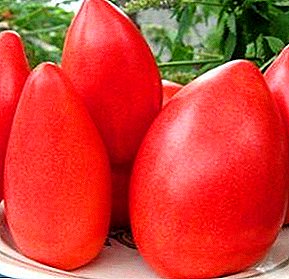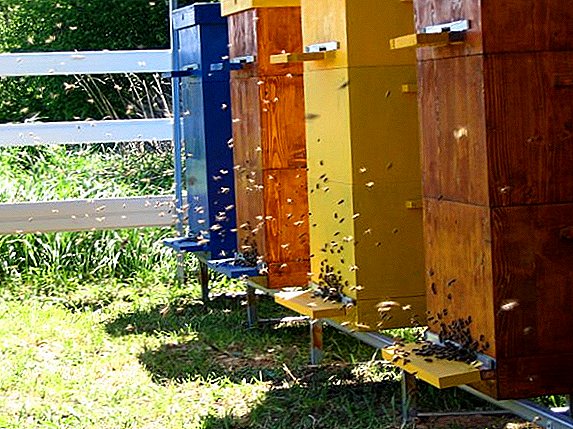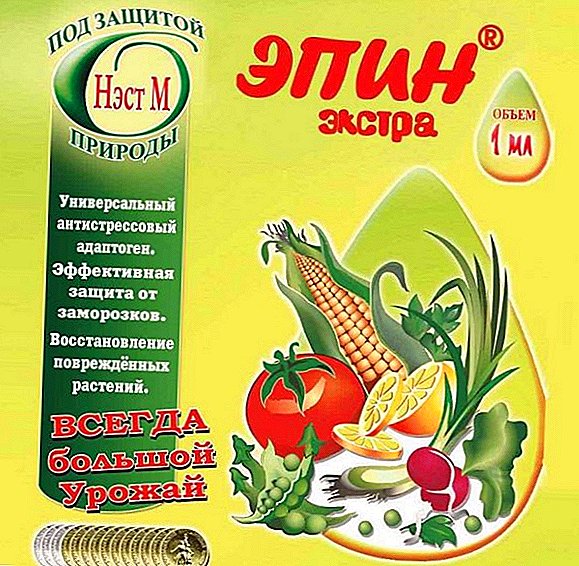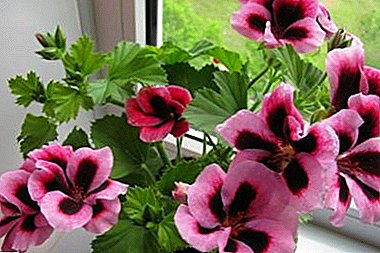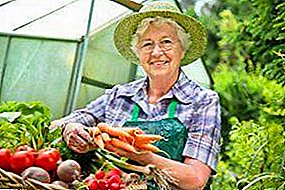
Vegetablesgrown in a greenhouse differ shortened growing season and high yield . Indoors, plants are less likely to be affected by pests; if desired, the process growing can be made trouble free, collecting fresh fruit throughout the year.
To succeed, it is important to choose the right types and varieties of vegetables, monitor watering and soil quality.
Features greenhouses
For growing vegetables use 2 types of shelters:
- Summer greenhouses without heating system. Prolong fruiting until autumn, suitable for growing different types of vegetables and seedlings. Ideal for temperate regions.
- The warmed capital greenhouses with heating. Designed for growing any vegetables, including the most heat-loving. Give the opportunity to obtain several harvests per year.
Greenhouses for growing vegetables should be spacious enough and high. Possible penetration into the ground at 0.5 meters. Winter greenhouses are erected on a reinforced foundation of cinder blocks or timber. Most comfortable structures have a welded metal frame with zinc coating. Tempered glass or a reinforced film is used as a covering material.
 The most expensive greenhouses covered with polycarbonate sheets. What are the features of growing vegetables in a polycarbonate greenhouse?
The most expensive greenhouses covered with polycarbonate sheets. What are the features of growing vegetables in a polycarbonate greenhouse?
Greenhouses should have air vents for airing and double doors protecting plants from cold outside air. Required good lighting, very desirable drip automatic watering system.
For heating greenhouses using electric boilers, heaters, wood stoves and even fires. The choice of heating method depends on the climate, time of use of the greenhouse and the financial capacity of the owner.
Selection of vegetables
Indoors, you can grow any vegetable crops. Preference is given to early vegetables. with a short growing season. Planting such varieties makes it possible to obtain the earliest yield possible. In year-round heated greenhouses, late-ripening varieties with interesting taste and good keeping quality can also be grown.
The best results are obtained by planting in the ground, but some cultures can be placed on the shelves. Hydroponic technologies are not recommended.they reduce costs, but greatly degrade the taste of the fruit.
Among the most popular greenhouse crops:
- Tomatoes There are many varieties cultivated specifically for greenhouses. They love nutritious light soil, moderate watering and a constant flow of fresh air without excessive moisture. Phosphate and potash fertilizers will help to increase the yield; it is not recommended to abuse nitrogen. Respond well to organics.
- Cucumbers. Very thermophilic culture, not loving sudden temperature changes. Vegetables need abundant watering, bright lighting and high humidity. Requires abundant organic feedings, preferably mullein or divorced poultry manure. When conveyor transplanting seedlings are able to bear fruit year-round.
- Sweet and hot pepper. Peppers love nutritious, light and loose soil, do not tolerate stagnant water. Prefer alternation of mineral and organic supplements. Sweet and bitter pepper can not be planted next to it, it is possible to pollination and change the taste of the fruit.
- Zucchini, zucchini, squash. Very undemanding cultures. For closed ground need varieties that do not form long lashes. They like light neutral or slightly alkaline soil, moderate humidity and not too high temperature.
- Eggplant. Prefer moderately dry air and moist nutrient soil. They respond well to nitrogen-containing fertilizers and ash. For high yields, it is recommended to add a weak solution of mullein with each watering.
- Leaf and head of lettuce. Differs in fast growth, perfectly adjoins to any vegetable cultures. Loves loose nutrient soil, bright light and abundant watering.
- Radish. Rapidly ripening crop requiring high moisture and nutritious light soil. Loves a bright light, but tolerates penumbra.
- Early white cabbage, broccoli. Undemanding to the composition of the soil, quietly tolerate a slight decrease in temperature. Bright lighting and abundant watering are required, as well as constant aeration of the greenhouse. Such early vegetables in the greenhouse can be cut 1.5 months after transplanting.
- Cauliflower. Very demanding on conditions of detention. It prefers high humidity and moderate temperature, in the heat the development of the heads slows down. It requires a loose soil and abundant feed with alternating mineral and organic fertilizers.
- Greenery and herbs (cilantro, basil, etc.). Fast growing crops suitable for compaction planting. They love loose nutrient soil and abundant watering. The earliest species (watercress, leaf mustard) can be cut a few days after sowing.
If you want to engage in the business of growing tomatoes in the greenhouse, you can familiarize yourself with this information on our website.
Also read on our website how to form lash cucumbers, what diseases they are prone to and with what is better to plant in the greenhouse.
About planting seedlings, the formation of bushes and with what garden crops the pepper in the greenhouse is compatible, find out on the website.
With what crops can be planted eggplant, look here.

Root crops grow much less often in greenhouses: beets, carrots, turnips, turnips. These crops do not need shelters, excellent harvest can be achieved in the open field.
Tables are approximate data of the yield of vegetables in the greenhouse:

Seedlings for winter cultivation
Some cultures are sown directly in the greenhouse, but more often already grown seedlings are planted in it.
For example, eggplant seedlings can not be sown in peat pots, weak plant roots can not get into the ground. Cucumbers and peppers do not like digging, they are best sown in separate cassettes or transplanted by transfer.
To get healthy and strong seedlings, the seeds need to be sorted and soaked in a growth promoter. After that their washed and placed in wet gauze for naklevyvaniya. When planting it is important to monitor the degree of penetration, usually it does not exceed 1-2 cm.
Boxes or containers with pots covered with glass and exposed to bright light. The optimum temperature for germination depends on the crop. For example, eggplants and tomatoes need moderate heat, and cucumbers and peppers Need a temperature not lower than 25 ° C.
 Seedlings fertilized after the formation of 3 of these sheets. It is best to use diluted organic or superphosphate.
Seedlings fertilized after the formation of 3 of these sheets. It is best to use diluted organic or superphosphate.
When the seedlings grow, need picks.
Tomatoes and peppers need pinching.stimulating the laying of the kidneys.
Soil and Fertilizer Selection
The soil in the greenhouse should be very nutritious and loose. Most vegetables prefer a slightly alkaline or neutral soil. The ideal composition is a mixture of old garden soil, peat or humus and river sand. When planting seedlings in each well you can put a little hydrogel, it is especially useful for moisture-loving crops: cucumbers, peppers and cabbage.
The choice of fertilizer depends on the type of vegetables. For example, tomatoes are very fond of phosphorus, but they react negatively to the abundance of nitrogen required by eggplants. Cucumbers prefer a variety of organics, from mullein to divorced chicken manure.
Universal fertilizer is superphosphate, potash complexes and ash. They can be applied to the soil before planting vegetables in the greenhouse.
Subtleties of care
How to grow vegetables in a polycarbonate greenhouse? Main concern greenhouse owner - ensuring the right level of humidity and maintaining optimum temperatures. Especially thermophilic are considered cucumbers and peppers, but tomatoes and eggplants need a constant inflow of fresh air. In the summer, you often need to open the doors and windows of the greenhouse, in the cold airing excluded.
What is the technology of growing vegetables in greenhouses in winter? In winter, plants are particularly affected by dry air. Solve the problem will help regular watering of the floor, glass and heating pipes with water. In a greenhouse you can place open water tanks. Tanks with a diluted mullein, placed in a greenhouse for tomatoes, not only guarantee optimal moisture, but also accelerate the ripening of fruits.
 The soil under the plants need to constantly loosen, removing weeds. To facilitate care will help mulching hay, sawdust, husk of sunflower seeds or humus.
The soil under the plants need to constantly loosen, removing weeds. To facilitate care will help mulching hay, sawdust, husk of sunflower seeds or humus.
Mulch retains moisture in the soil and protects against pests. You can fight with aphids by regular spraying with water or decoction of herbs, insecticides will help in severe cases.
Growing vegetables in the greenhouse - not too difficultrequiring attentiveness and the right choice of varieties. The efforts of the gardener will be rewarded with an excellent harvest when harvesting vegetables in greenhouses.
Greenhouse vegetable growing can be the beginning of a promising business of its own, because high-quality early fruits are very much in demand by buyers.
Useful tips in the video, how to grow vegetables in the greenhouse:


